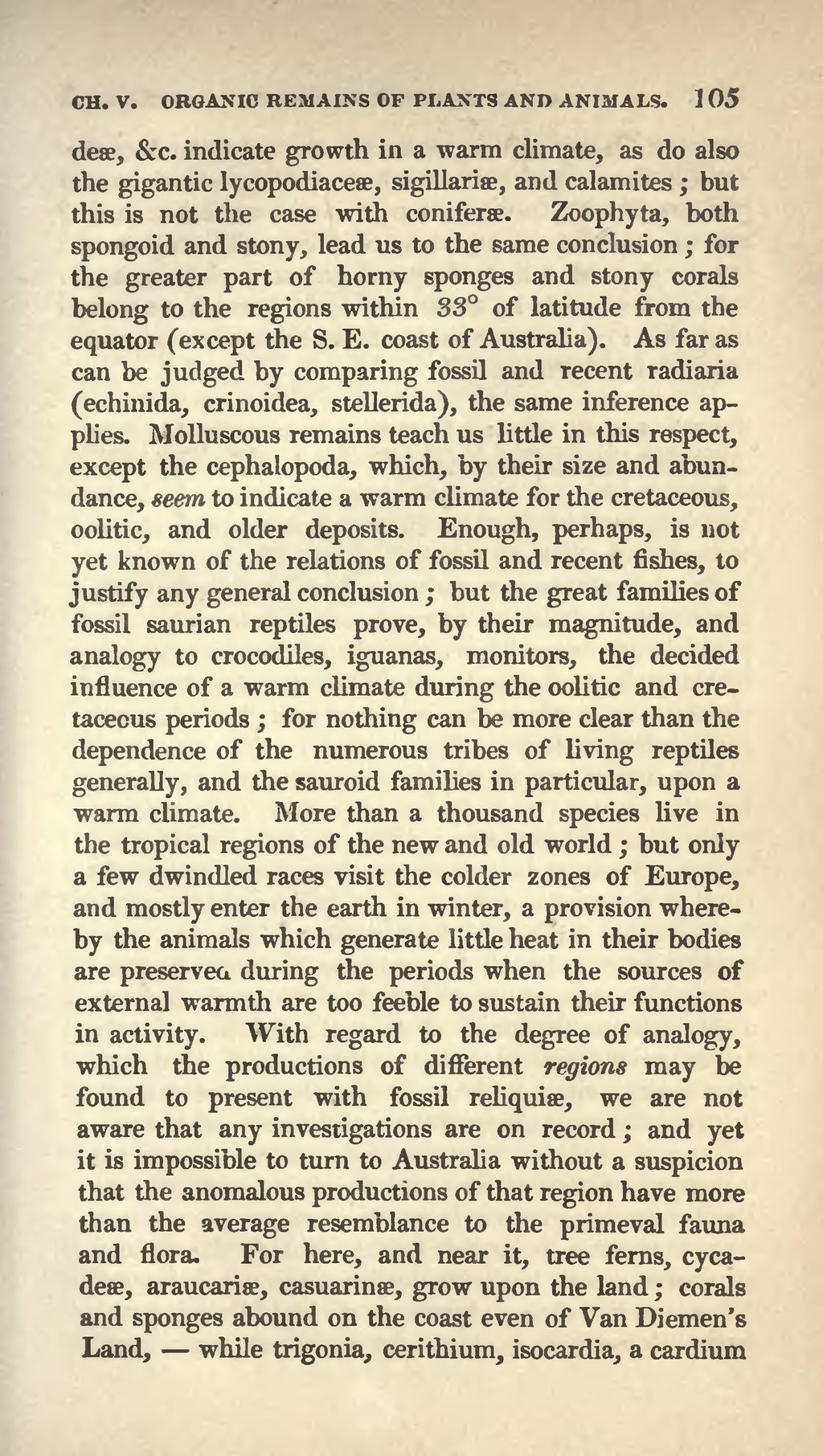deæ, &c. indicate growth in a warm climate, as do also the gigantic lycopodiaceæ, sigillariæ, and calamities; but this is not the case with coniferæ. Zoophyta, hoth spongoid and stony, lead us to the same conclusion; for the greater part of horny sponges and stony corals belong to the regions within 33° of latitude from the equator (except the S. E. coast of Australia). As far as can be judged by comparing fossil and recent radiaria (echinida, crinoidea, stellerida), the same inference applies. Molluscous remains teach us little in this respect, except the cephalopoda, which, by their size and abundance, seem to indicate a warm climate for the cretaceous, oolitic, and older deposits. Enough, perhaps, is not yet known of the relations of fossil and recent fishes, to justify any general conclusion; but the great families of fossil saurian reptiles prove, by their magnitude, and analogy to crocodiles, iguanas, monitors, the decided influence of a warm climate during the oolitic and cretaceous periods; for nothing can be more clear than the dependence of the numerous tribes of living reptiles generally, and the sauroid families in particular, upon a warm climate. More than a thousand species live in the tropical regions of the new and old world; but only a few dwindled races visit the colder zones of Europe, and mostly enter the earth in winter, a provision whereby the animals which generate little heat in their bodies are preserved during the periods when the sources of external warmth are too feeble to sustain their functions in activity. With regard to the degree of analogy, which the productions of different regions may be found to present with fossil reliquiæ, we are not aware that any investigations are on record; and yet it is impossible to turn to Australia without a suspicion that the anomalous productions of that region have more than the average resemblance to the primeval fauna and flora. For here, and near it, tree ferns, cycadeæ, araucariæ, casuarinæ, grow upon the land; corals and sponges abound on the coast even of Van Diemen's Land,—while trigonia, cerithium, isocardia, a cardium
Page:A Treatise on Geology, volume 1.djvu/121
Jump to navigation
Jump to search
This page has been validated.
CH. V.
ORGANIC REMAINS OF PLANTS AND ANIMALS.
105
